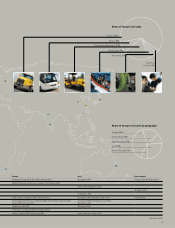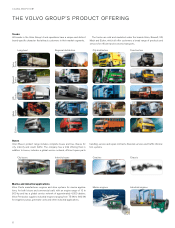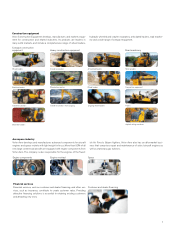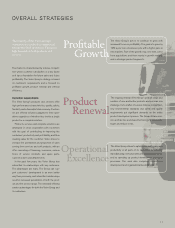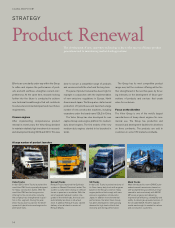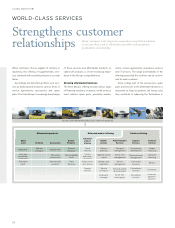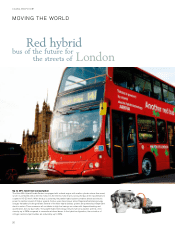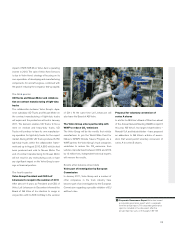Volvo 2010 Annual Report Download - page 19
Download and view the complete annual report
Please find page 19 of the 2010 Volvo annual report below. You can navigate through the pages in the report by either clicking on the pages listed below, or by using the keyword search tool below to find specific information within the annual report.
Volvo Buses
In the summer of 2010 serial production
started of Volvo’s hybrid buses, both
single deckers and double deckers.
Hybrid buses reduce fuel consumption
and emissions of CO2 by as much as
35%. The company has redeived orders
for some 200 hybrid buses in Europe
and has carried out positive tests at
operators in Brazil and Mexico.
Volvo Construction Equipment
Volvo CE is highlighting its commitment
to improving fuel efficiency with a range
of solutions that encompasses engines,
hydraulic systems, operator behavior and
hybrid technology. The company is ram-
ping up its investments in new technol-
ogy to maintain its leadership in fuel
efficiency and thereby environmental
protection.
Volvo Penta
With new and specially designed con-
trols from Volvo Penta, boat drivers can
quickly choose between a number of
features, for example cruise control,
powertrim assistant and tow mode. The
electronics development makes it possi-
ble for Volvo Penta to offer its custom-
ers soft products of this kind. Also
among these is the appreciated joystick,
which makes maneuvering a boat easier
and safer.
Volvo Aero
The main challenge for the airline industry
is to reduce the engines’ fuel consump-
tion and thus also the emissions. Volvo
Aero’s lightweight technologies are
therefore in increasing demand from the
large, international engine manufacturers,
while the technologies also get new
applications in the aerospace industry
The drivelines are designed so they can be
adapted to a large number of applications in most
of the Group’s products. The diesel engines are
used in trucks, buses and construction equip-
ment, as well as in boats and industrial applica-
tions, such as generator units.
The strongest driver of the development of
drivelines is customer requirements and prefer-
ences as well as new legislation with stricter
emissions requirements. Products with reliability,
sustainability, good drivability, favorable fuel
economy and high environmental parameters
help boost customers’ productivity and profitability.
The environmental aspect is of great signifi-
Continued focus on product development
Research and development costs, SEK billion
04 05
030201 09 10
080706
7.6 7.66.85.95.4 13.2 13.014.311.18.4
cance in all product development. Alternative
drivelines and fuels, and the lower fuel consump-
tion when using traditional drivelines, provide for
twice the benefit – less impact on the environ-
ment and lower costs for customers. The Volvo
Group is a driving force in the areas of environ-
mental adaptation and energy efficiency. The
undertaking involves a gradual transition from
fossil fuels, such as oil and natural gas, to fuels
from renewable sources and to hybrids.
The Group continuously strengthens the
development of aftermarket products and ser-
vices with the aim of meeting customer needs
through the entire product life cycle.
Future direction
Within the strategic area of Product Renewal the
future direction is:
• Meet future emission standards with competitive
products – capitalize on converging technologies.
• Start production in India of medium-duty engine
platform developed by the Group.
• Develop new products adapted for growth markets.
• Further enhance the Group’s market-leading posi-
tion within diesel engines and automatic gear-
boxes.
• Commercialize the Group’s shared technology for
diesel-electric hybrids.
• Focus on fully utilizing common architecture and
shared technology.
15


